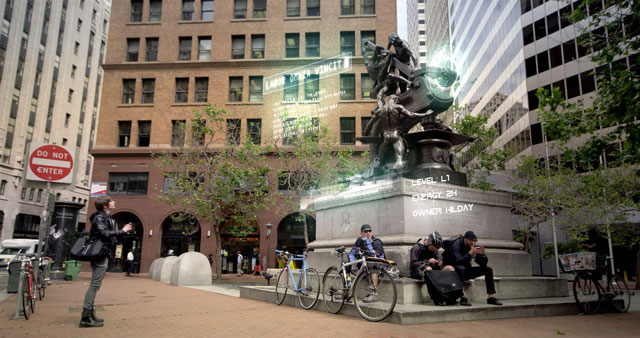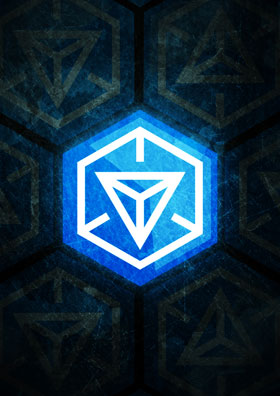
As they walked through the Johannesburg Botanical Gardens on a recent balmy evening, Justin and his two friends discussed safety and how they would react to being mugged. It was, after all, getting towards sunset, in a relatively isolated section of a big park that has seen its share of unhappy incidents.
Then again, Justin had been to the same spot in the park half a dozen times before and there were still joggers and cyclists about. But less than an hour later he was lying by the side of the road with a badly broken leg, desperately trying to flag down passing drivers.
“We were just hoping they were good guys,” said Justin of the two assailants. “Then the one pulled a gun and cocked it. He didn’t even point it. I just ran.”
Though he successfully jumped the decorative hedge nearby, the small drop at the other side left him with a shin bone so badly fractured that surgeons had to harvest bone from his thigh bone to reconstruct it.
Justin blames his injury on, in order, himself, the criminals and the authorities who have failed to stem crime. The one party he does not blame is Google.
“I was just in the wrong place at the wrong time,” he said. “The game didn’t put me in danger; it just took me to an awesome park with really bad timing on my part.”
Mobile maniacs
The game is Ingress, a relatively new offering from Google that comes with risks — and rewards — in the real world. And perhaps the most eloquent testimony to just how powerful it is comes from Justin, who was back in the Johannesburg inner city a week later to continue playing it, medical advice to stay immobile be damned.
Ingress is best described as a geospatial, augmented-reality, massively multiplayer real-time online strategy game in which two teams try to “capture the flag” in locations around the world. But it has been more succinctly described as “the game where you wander around town looking silly”.
That is pretty much what Muggles see: people staring at their cellphones as they walk around monuments and public spaces for no apparent reason. (Muggles are people who lack any sort of magical ability, according to the Harry Potter books.) On occasion, they may also see small groups of such people, either smiling or frowning at one another while gesticulating with, and at, their mobile devices.
On their screens those players are engaged in combat. The difference between Ingress and the average videogame is that they can only take part in the war by being at specific real-world locations, as measured by the GPS on their smartphones. Which is how Justin found himself in the botanical gardens at the wrong time.
But it is also how Justin has got out to see parts of the city he grew up in, but never thought to visit.
“Constitution Hill, all these places, I would never have gone there if it wasn’t for the [Ingress] portals,” Justin said. “Playing this game I’ve developed an understanding of the layout of the city.”
 He seems to be the rule rather than the exception. One mugged Benoni player barely paused between reporting the incident to the police and turning back to the game.
He seems to be the rule rather than the exception. One mugged Benoni player barely paused between reporting the incident to the police and turning back to the game.
Google in South Africa said it has not been notified of any crimes related to the game, whether robberies or trespassing, which are a regular occurrence in Europe and the US, where players sometimes feel the need to be in just the right spot to claim a key point, disregarding private property in the process.
The Ingress fan base also extends to the public sites Google uses as the basis for the game, it seems.
“We work really hard to draw young people here, so they can see more of their history and culture,” said Sonja Lombard, who manages the Voortrekker Monument. The landmark boasts seven Ingress portals in the gaming world overlay. “Getting these specific young people here is all the better. They are the ones who are clever with technology, who use platforms like Facebook and Twitter and who can reach other people very quickly. We hope that they’ll share what they see here and get their friends excited about coming,” said Lombard.
The Voortrekker Monument did not apply to have the portals located on its grounds; managers only became aware of the existence of the portals after a friendly player informed them. Unlike the experiments Google is conducting in the US, the company has made no effort to drive players to specific commercial locations in South Africa — not yet, anyway. The sites they have selected, based on player submissions and Google’s own mapping data, range from shopping centres to post offices in Johannesburg, Cape Town and Durban.
That makes for an eclectic mix, which the players seem to love.
“I like playing with other people, I like the social element and I like the planning and strategy,” said Justin. “What I really want to do as soon as I get back on my feet is to get back out there and play in the real world. That’s the fun of it, really.”
Hot in the trenches
My first triumph lasted about 24 minutes. That’s how long it took for the closed-minded ones to dispatch one of their agents, from wherever such luddites lurk when they are not trying to hold back mankind’s progress, and for that operative to undo my work.
I got to the new portal just east of the Johannesburg Zoo by dint of early rising and captured it for the Enlightenment. Fittingly this, my first shot in the war, was on the grounds of the Ditsong National Museum of Military History. What better battlefield than a place that treasures the memory of conflict?
Less than half an hour later the attack started.
Narra, a powerful Resistance player, ripped through my newly claimed portal like a force of nature. Damn his blinkered humanity. He probably didn’t even break a sweat. Clearly I would need more juice to have an effect.
It took determination, discipline and lots of detours to nearby (and not-so-nearby) portals, but two weeks later I had amassed a ludicrously large arsenal of weapons. As a new player I still did not have access to the good stuff, but it turns out quantity can substitute for quality.
Well, quantity, time and a fair amount of stupidity. I got rained on, risked being struck by lightning and lost three hours of my life, not to mention some dignity.
“This is strange exercise you do,” laughed a staff member, as I circled the war monument for what felt like the hundredth time in an effort to bomb the portal linked to it into submission.
But oh, the joy of taking Narra’s portal and in the process knocking down a number of mind-control fields it anchored. Vengeance hard-earned is the sweetest of all.
Then the wheel turned. The following week Eejay managed to wrest control of the war monument away from the Enlightenment for all of five minutes. Before he could quite finish the job I was there to block him; the e-mail notification of his attack on my in-game assets arrived just in time.
But the wheel never stops turning. A week later the Resistance struck a tremendous blow, turning our beautiful green fields of control to their own sickly blue hue and claiming for their cause all the humans caught beneath it.
Sometimes it seems this war will never end. Just as well. Even those on the winning side would be heartbroken if it ever did.
The back story
You need to know little to nothing about the narrative in order to play the game, but that doesn’t mean it’s not worthwhile. The simple version involves, mainly, monuments. People, the story goes, are drawn to important places and tend to erect monuments there. Strange portals have started to appear at these places and those who control the portals can influence nearby humans.
The factions
The Resistance fear the apparent intelligence behind the portals and want to control them to safeguard mankind. The Enlightened want to exploit the apparent potential of the portals to inspire brilliance and creativity.
Playing the game
The field of play is displayed on a smartphone or tablet application, which shows the location of portals, the equipment that captures it for one side or the other, and various other bits and pieces. Much of the game involves hitting the right button when in the right real-world location.
Requirements
A smartphone with a GPS and the Android operating system. The application is free from the Google Play store but you need an invitation code to start playing. Submitting your e-mail address on Ingress.com should get you one within a few weeks. A big data bundle and some serious battery power are also highly recommended. — (c) 2013 Mail & Guardian
- Visit the Mail & Guardian Online, the smart news source




